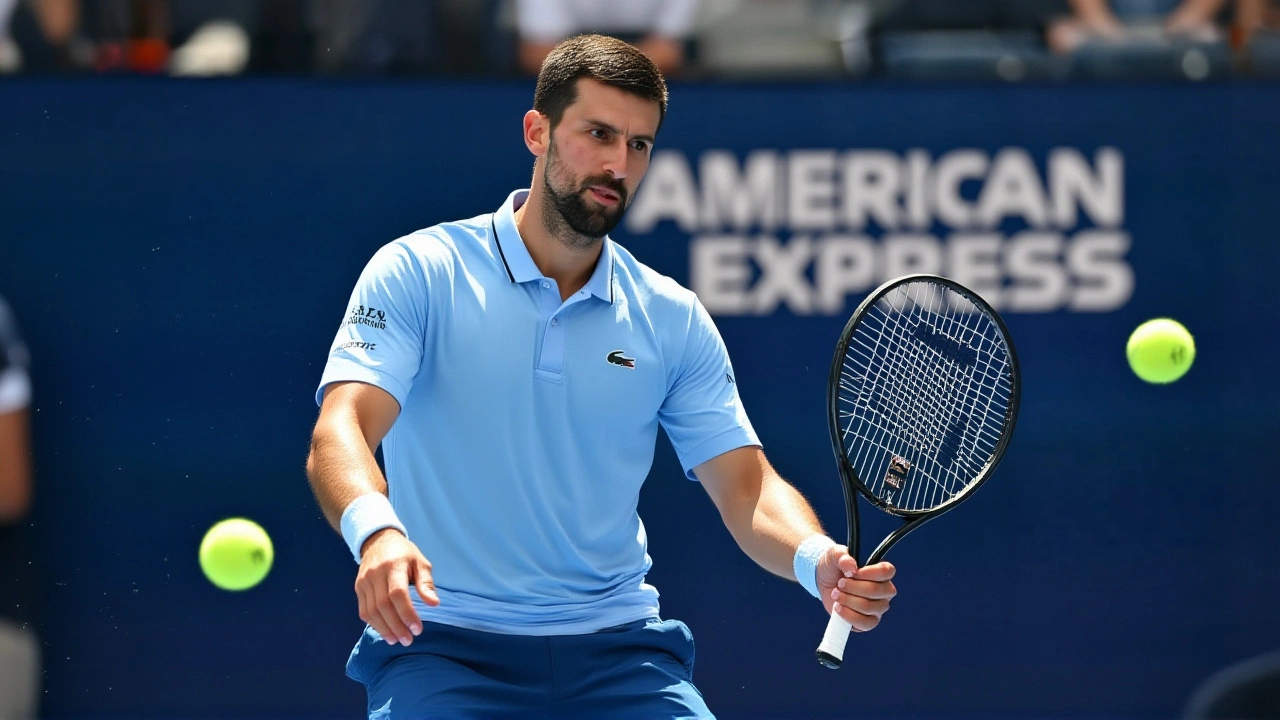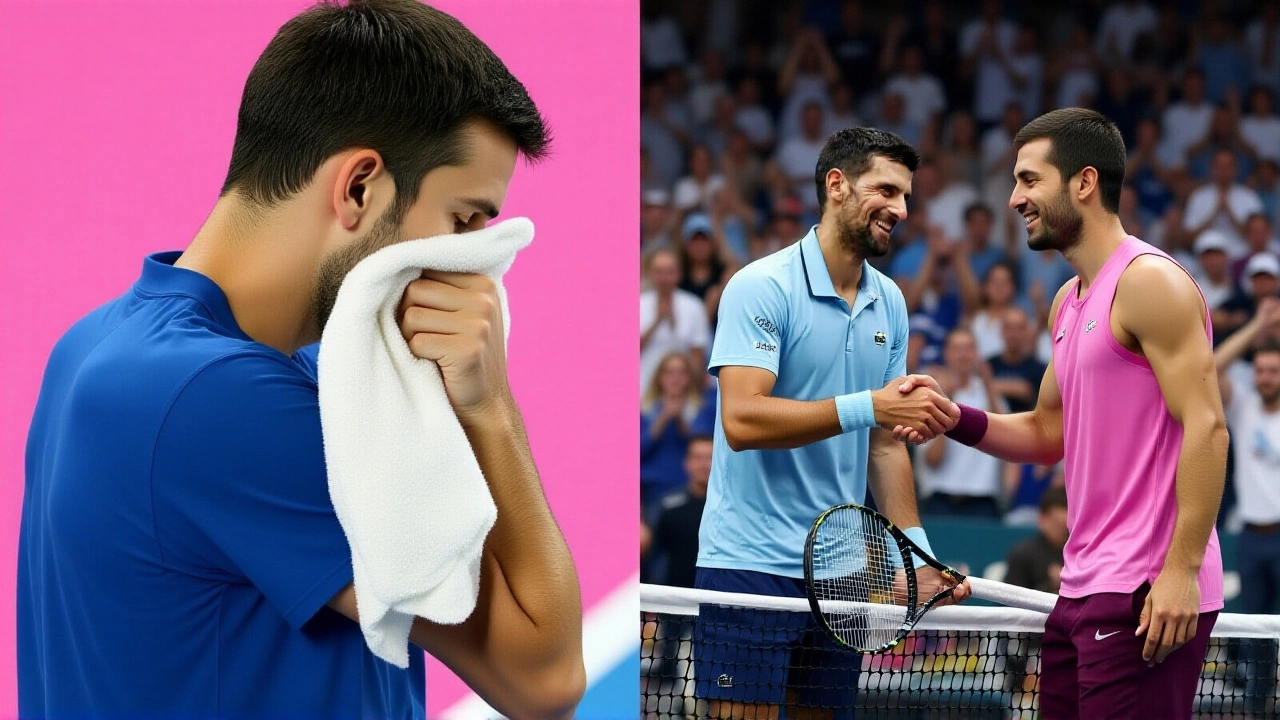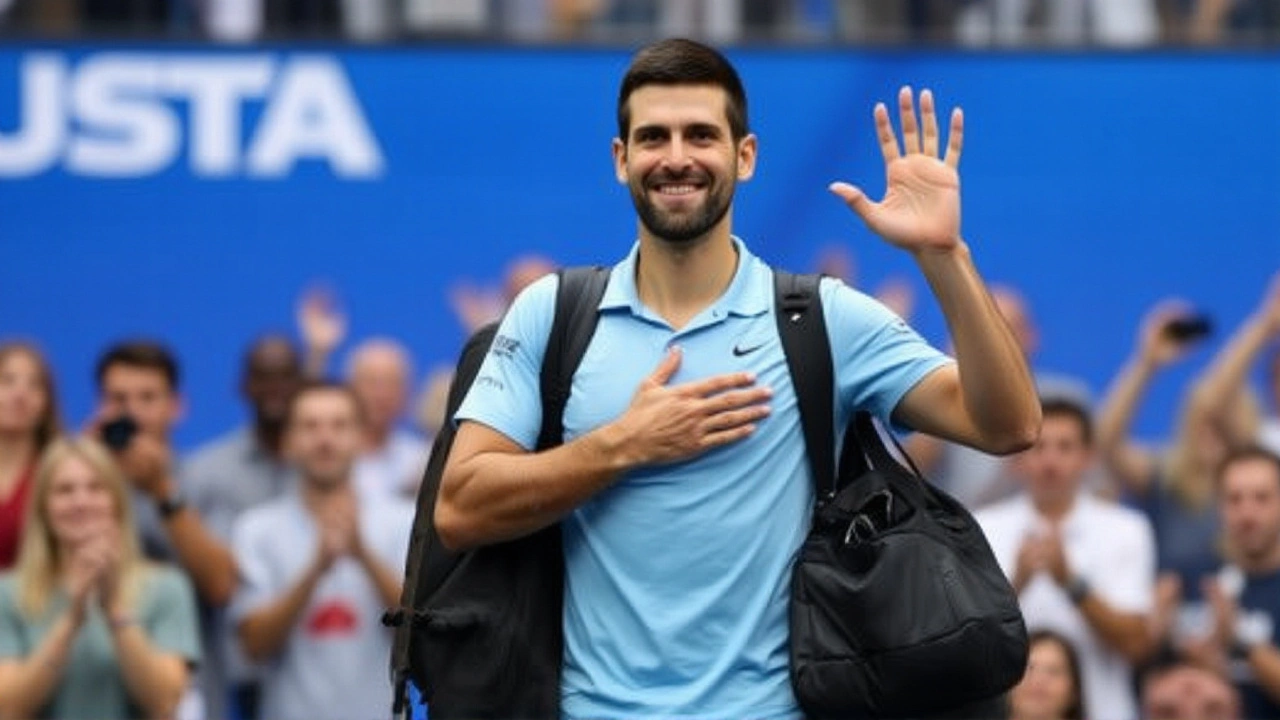When Novak Djokovic, a Serbian tennis legend, staged a dramatic recovery from a heat‑induced collapse on October 7, 2025, the world took notice of his relentless grit at the Rolex Shanghai MastersShanghai. The ATP‑sanctioned Masters‑1000 event, hosted at the sprawling Peak Stadium, has become a barometer for how top players cope with oppressive humidity and soaring temperatures that regularly breach 38 °C.
Why the Shanghai Masters Matters
The Shanghai Masters is the only ATP Masters 1000 tournament held in East Asia, drawing the sport’s elite for a week of high‑stakes matches that feed into year‑end rankings. In 2025 the tournament runs from September 29 through October 12, offering a $2.25 million prize pool and 1,000 ranking points to the champion. For a 38‑year‑old Djokovic, the event represents both a chance to add another Masters title to his record 38 and a litmus test of his durability as he chases a historic 24th Grand Slam later in the season.
Third‑Round Heroics Against Max Hanfmann
On October 5, Djokovic faced Germany’s Max Hanfmann in the third round. The match stretched 2 hours 58 minutes, a grueling test of stamina that saw Djokovic survive a "first‑set scare" before pulling ahead in a decisive third set. After the win, he told reporters, "I'm grinding almost three hours, you know, third round of the Masters 38 with the full stadium cheering my name. It's a dream come true for me, honestly. So, I'm very thankful." The crowd’s roar, he added, "is something you don't appreciate on TV – it fuels you."
Statistically, Djokovic’s first‑serve percentage rose to 71% after a shaky start, while his break‑point conversion jumped to 57% in the final set, underscoring his ability to adapt mid‑match.
Heat Wave Turns Dangerous: Collapse vs. Jaume Munar
Two days later, the heat turned hostile. The temperature hovered at a blistering 38.4 °C with humidity spiking above 85%, conditions officials warned could trigger heat‑related illnesses. During his fourth‑round clash with Spain’s Jaume Munar, Djokovic’s leg gave way, and he briefly collapsed on court. Medics rushed in, and after a brief assessment he returned to the baseline, visibly shaken but determined.
"I felt the world tilt," Djokovic later recalled. "My legs were heavy, the air felt like syrup, but I knew I couldn't quit – not here, not now." He rallied to win 6‑4, 3‑6, 7‑5, securing his spot in the quarter‑finals.
Sports physiologist Dr. Elena Vargas of the Shanghai Institute of Sport explained, "At those temperature‑humidity indexes, core body temperature can surge past 39 °C within 30 minutes of high‑intensity activity. Proper hydration and electrolyte balance become critical, and even elite athletes can experience transient syncope if cooling measures lag behind heat production."

Reactions From the Tour and Fans
The ATP Tour released a statement praising Djokovic’s resilience while urging players to monitor their health closely: "We commend the champion’s fighting spirit and remind all competitors of the enhanced heat‑protocols in place for Shanghai."
Fans, both in‑arena and worldwide, flooded social media with supportive messages. A fan tweet captured the mood: "Seeing #Djokovic push through that collapse gave me chills – pure warrior energy!"
What This Means for the Rest of the Tournament
Having survived a near‑catastrophic episode, Djokovic now faces a semifinal showdown against either a rising Asian talent or a seasoned European contender. His ability to manage body temperature will likely dictate his strategy: longer breaks, iced towels, and a focus on shorter points. Analysts predict a tactical shift, noting that Djokovic may rely more on his renowned backhand and drop shots to shorten rallies.
Moreover, the incident has reignited debate about scheduling matches during peak heat hours. Organizers are considering shifting afternoon matches to earlier slots, a move that could benefit players but disrupt broadcasting schedules.

Looking Ahead: The Road to the Finals
If Djokovic advances, a potential final against world No. 2 will set up a clash that could determine the year‑end ATP No. 1 ranking. Given his current form and the emotional momentum from overcoming adversity, many pundits believe he has a realistic shot at adding a 39th Masters crown – a record that would further cement his place in tennis history.
- Event: Rolex Shanghai Masters (Sept 29‑Oct 12, 2025)
- Venue: Peak Stadium, Shanghai
- Key Matches: Djokovic vs. Hanfmann (Oct 5), Djokovic vs. Munar (Oct 7)
- Temperature during collapse: 38.4 °C, 85% humidity
- Djokovic’s age: 38 years
Frequently Asked Questions
How did the extreme heat affect Djokovic’s performance?
The oppressive heat pushed Djokovic’s core temperature close to danger levels, leading to a brief on‑court collapse. After replenishing fluids and receiving quick medical attention, he adjusted his pacing and won the match, but the episode highlighted the physical toll such conditions can take even on elite athletes.
What changes are organizers considering to protect players?
Tournament officials are reviewing the schedule to move high‑intensity matches out of the hottest afternoon window, increasing the number of cooling breaks, and expanding on‑court misting stations. These measures aim to reduce heat‑related incidents without compromising broadcast commitments.
Who were Djokovic’s opponents in the matches discussed?
In the third round he defeated Germany’s Max Hanfmann after a nearly three‑hour battle. Two days later he faced Spain’s Jaume Munar, surviving a heat‑related collapse to win in three sets.
What does this mean for Djokovic’s season goals?
A deep run in Shanghai keeps Djokovic well‑positioned for a year‑end No. 1 ranking and boosts his confidence heading into the Asian swing and the season‑ending ATP Finals. However, managing his health will be critical as he balances the pursuit of a potential 24th Grand Slam title.
How have fans reacted to Djokovic’s comeback?
Supporters have lauded his perseverance, flooding social platforms with praise and nostalgic references to his earlier career comebacks. The on‑site crowd at Peak Stadium gave him a standing ovation after the Munar match, underscoring his enduring popularity.
